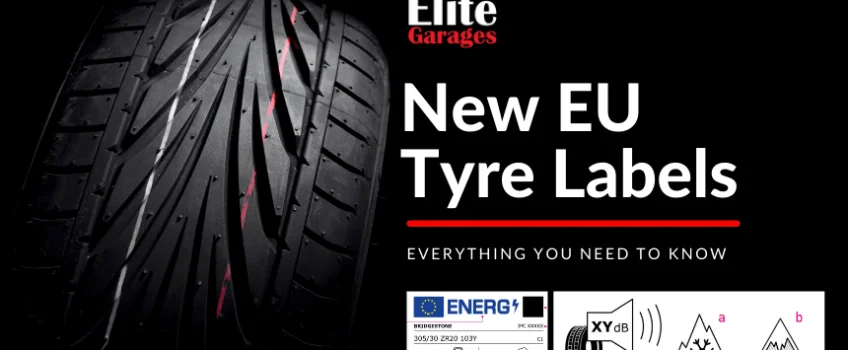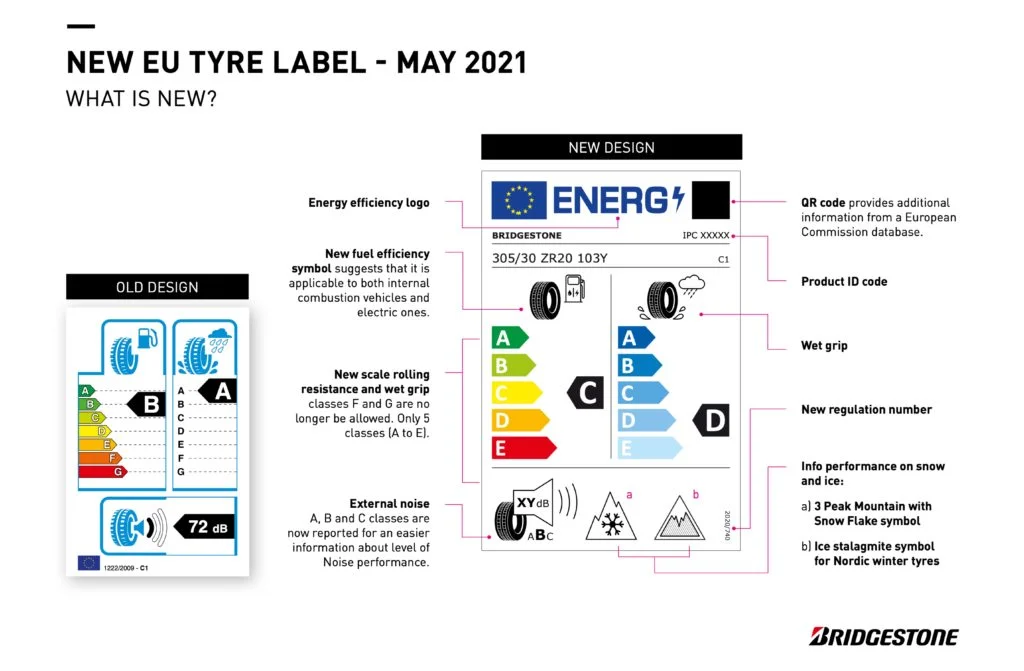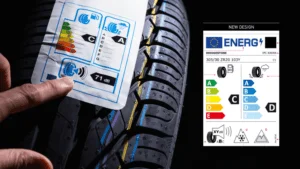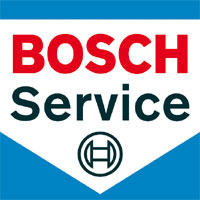
What Are EU Tyre Labels?
Tyre labels were introduced by the EU in 2012 to provide information on tyre safety and their environmental impact. EU tyre labels classify tyres for braking on wet surfaces, performance for rolling resistance and external noise. These 3 key parameters help us to understand the quality of the tyres we are buying. There will be some changes to these EU tyre labels from 1st May 2021.
New Regulations And EU Tyre Labels
It was Regulation (EC) N 1222/2009 that first introduced the obligation to show the tyre label when placing car and van tyres on the EU market. However, this regulation has been reviewed and will be replaced by Regulation (EU) 2020/740 from 1st May 2021 onwards. Under the new regulation, bus and truck tyres are also included.
 What Is Different About The New Regulation?
What Is Different About The New Regulation?
As well as including bus and truck tyres, the new regulation brings changes to the three key parameters. New symbols for grip in icy conditions and/or severe snow conditions are introduced, and the labels also include QR codes and an energy efficiency logo.
Wet Grip
Changes to the EU tyre labels will feature new wet grip measurements that only vary from class A to E. The F and G classes are merged to form class E and the current class E becomes class D in the future. An ‘A’ rating for wet grip indicates a shorter braking distance, whereas an ‘E’ rating indicates the longest braking distance.
Energy Efficiency/ Rolling Resistance
The new EU tyre labels only have 5 classes (A to E) for rolling resistance. A top quality ‘A’ rated tyre has a lower rolling resistance so less energy is needed to move the vehicle. Therefore, there will be lower energy costs (fossil fuels or electricity). The fuel efficiency symbol now includes an electricity lightning symbol, emphasising that it applies to electric vehicles as well as internal combustion vehicles.
External Noise
At the bottom of the new EU tyre labels, the noise class is written as ‘ABC’, with the value of external noise in decibels, rather than the sound waves previously used to represent the class. This clear ‘ABC’ categorisation should be easier for consumers to read.
External noise class ranges from A (less noise outside the vehicle) to B (more noise) whilst noise levels in class C are no longer permitted. It is easier to integrate the ABC categories into databases and displays and it will also be easier for customers to read.
3 Peak Mountain Snow Flake and Nordic Winter Tyres
Tyres deemed suitable for snow conditions will include the ‘3 Peak Mountain Snow Flake’ (3PMSF) symbol. You can also find this snowflake surrounded by three mountain peaks on the sidewall of the tyres.

There will also be a new ice stalagmite symbol, featuring on Nordic winter tyres designed for use on ice surfaces. These new symbols will appear next to the external noise symbol.
QR Code
The new EU tyre labels will include a QR code. When scanned by a smartphone or other reader, it will provide extra information from a European Commission product database. This online platform is called the European Product Registry for Energy Labelling (EPREL).
Energy Efficiency Logo
Although the EU tyre labels contain several other important criteria besides energy efficiency, it is within the EU’s Energy Efficiency Labelling category, so the new labels say “Energy” at the top.
Why Are The Labels Being Changed?
By introducing the revised regulation, consumers should be more informed and empowered when buying their tyres. It is hoped that the changes will increase the uptake of tyres with better safety. Another driving force behind the new regulation is to help improve energy consumption within the automotive industry. Tyres in the top-performing classes for energy efficiency result in energy savings and reductions in CO2 emissions.
Can I Still Drive On Tyres With The Old Tyre Label Classes?
Yes, you can still drive tyres with the old label classes. All tyres produced before May 2021 will still have the old label (you can tell the date by looking at the DOT code). The actual tyres will be exactly the same and it is just the label that is changing. Tyres in classes E, F and G will be reclassified to 1 class higher, but the actual construction will be identical.
Summary Of New EU Tyre Labels
The changes will provide consumers with additional information, such as the ability to identify winter tyres and all-season tyres. This includes those that have enhanced winter performance (identified by the 3PMSF symbol). The QR code will be beneficial as it allows individuals to confirm statements on the label through a link to an official product database. This brings increased transparency into what quality your tyres are.
The new label values will be available to the public on 1 st May 2021. The European label does not cover all aspects of what defines a tyre with quality performance. Therefore, when selecting a tyre that best suits you, it’s always advisable to draw on the advice and knowledge of a tyre specialist like Elite Garages.
We supply a wide range of tyres, from budget tyres to off-road tyres. To reserve your tyres, click here. To contact your closest branch for further information, click here for our contact details!
About Us
Opening Times
Saturday : 8:30–4:00
Sunday : closed
More Information
Contact UsCustomer Information Pack
Check MOT Due Date
Free MOT reminder
Careers


